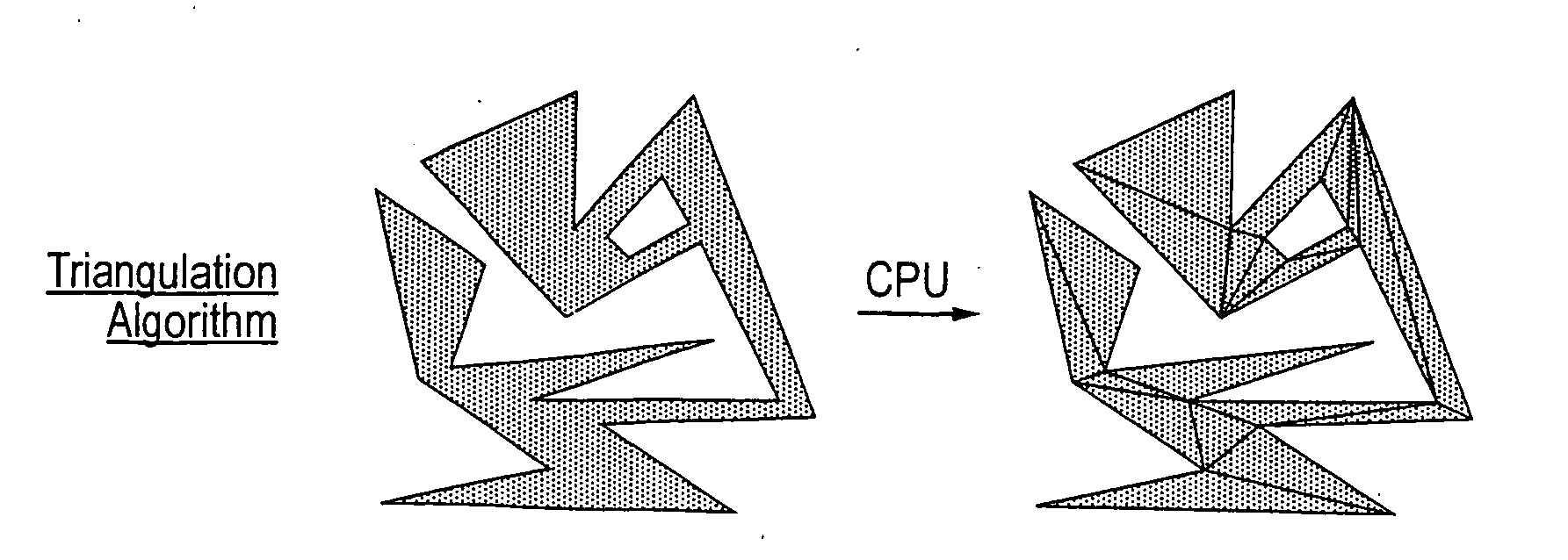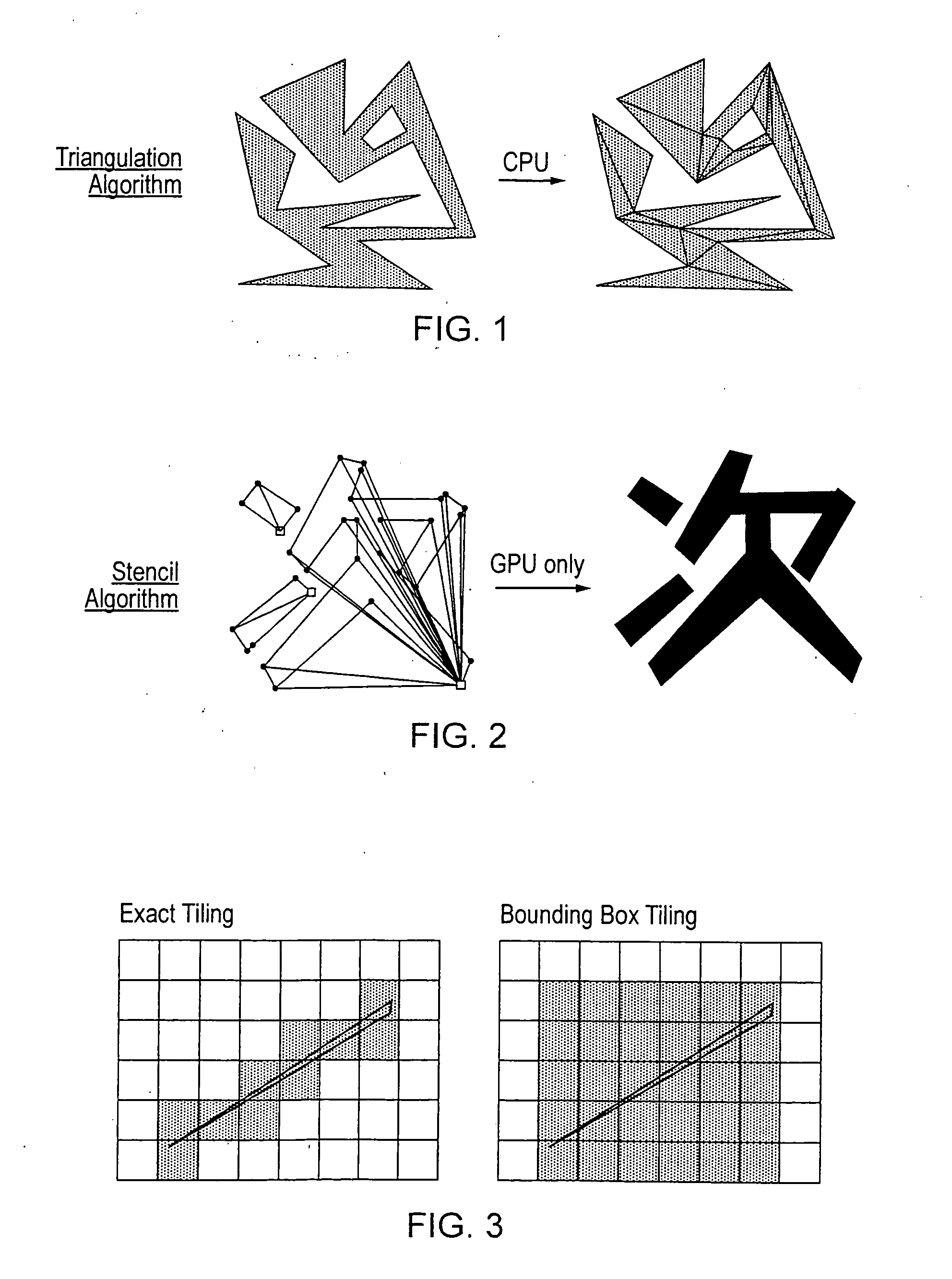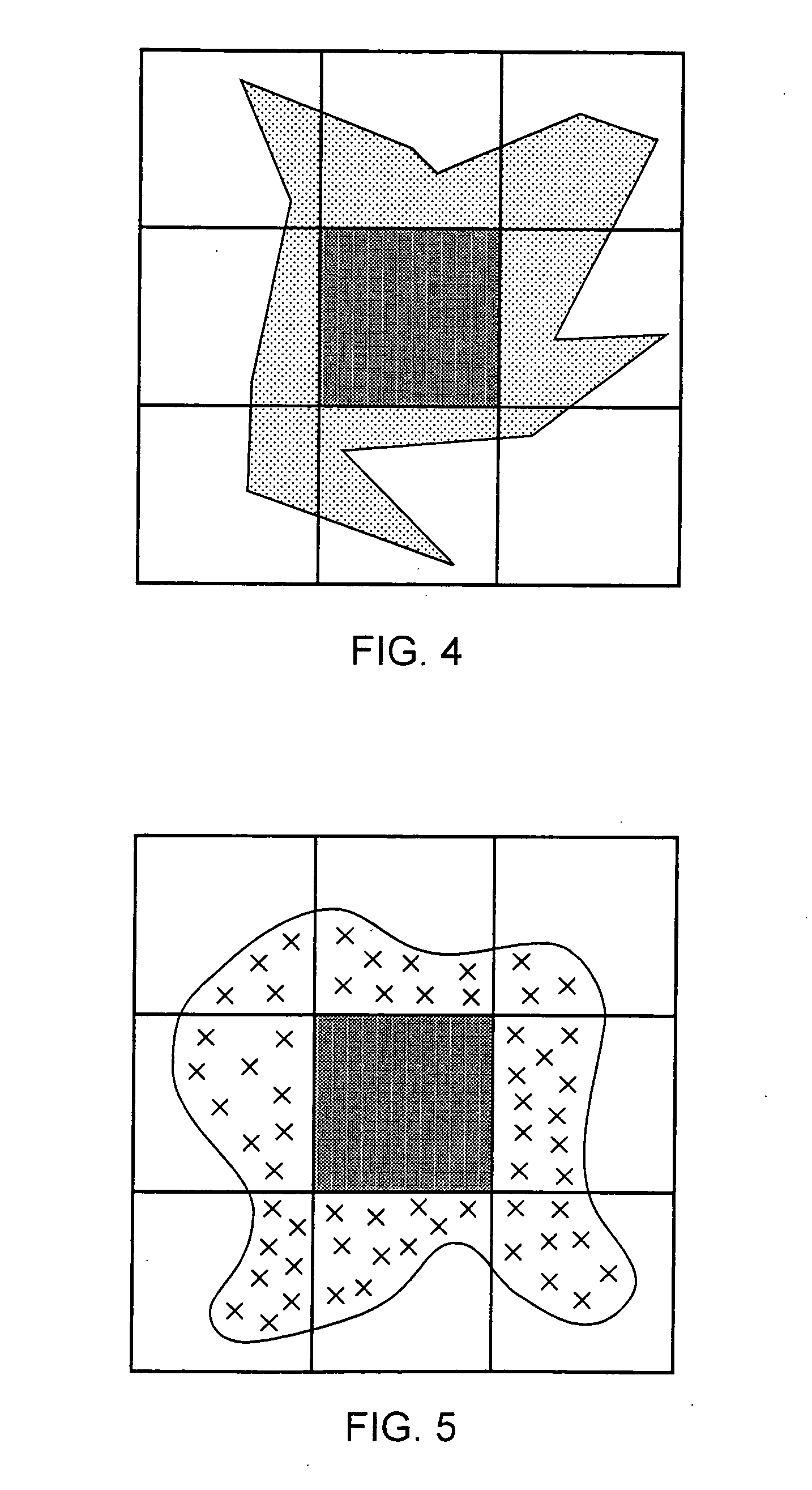Graphics filled shape drawing
- Summary
- Abstract
- Description
- Claims
- Application Information
AI Technical Summary
Benefits of technology
Problems solved by technology
Method used
Image
Examples
Embodiment Construction
[0065]When triangulating polygons the problem is often considered globally—any edge may affect any pixel. However, this problem may be broken down into multiple local problems, e.g one problem per tile. If no edges cross a given tile, no pixels change state and so the visibility of the entire tile can be evaluated once for the entire tile.
[0066]FIG. 4 illustrates a filled shape with straight edges (polygon). FIG. 5 illustrates a filled shape with curved edges. It can be noted that since occlusion is known for the entire middle-tile, use of the stencil-technique can be avoided for this tile, thereby saving both fill-rate (complex polygons cause overdraw in the stencil-buffer), and reducing the triangle-count for that tile. All objects at a greater depth within an object list for the tile can be deleted as they will be overdrawn by the filled tile.
[0067]The local processing can be used to reduce overdraw; for a given tile only those edges that cross the tile need to be rendered. This ...
PUM
 Login to View More
Login to View More Abstract
Description
Claims
Application Information
 Login to View More
Login to View More - Generate Ideas
- Intellectual Property
- Life Sciences
- Materials
- Tech Scout
- Unparalleled Data Quality
- Higher Quality Content
- 60% Fewer Hallucinations
Browse by: Latest US Patents, China's latest patents, Technical Efficacy Thesaurus, Application Domain, Technology Topic, Popular Technical Reports.
© 2025 PatSnap. All rights reserved.Legal|Privacy policy|Modern Slavery Act Transparency Statement|Sitemap|About US| Contact US: help@patsnap.com



